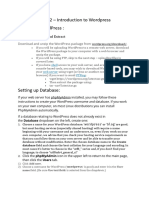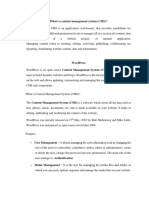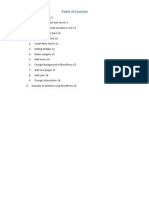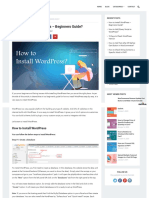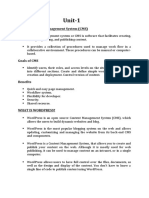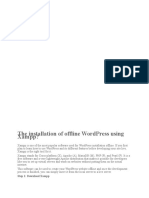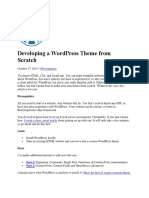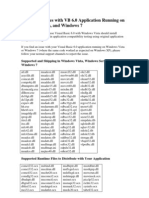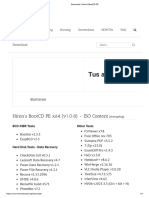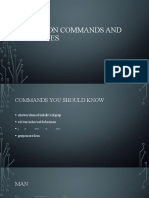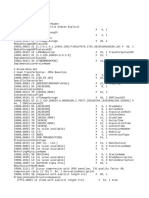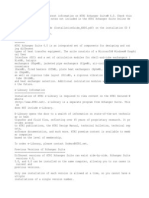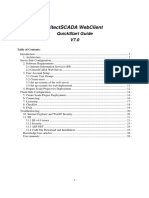0% found this document useful (0 votes)
31 views3 pagesHow To Install WordPress On Your Local Server
The document provides a step-by-step guide on how to install WordPress on both local and online servers. It covers downloading WordPress, setting up the database, configuring the wp-config.php file, running the installer, completing the installation, and optional customization. Detailed instructions are included for both local (using XAMPP) and online server installations, including database setup and file uploads.
Uploaded by
thubelihle.mgadula15557Copyright
© © All Rights Reserved
We take content rights seriously. If you suspect this is your content, claim it here.
Available Formats
Download as PDF, TXT or read online on Scribd
0% found this document useful (0 votes)
31 views3 pagesHow To Install WordPress On Your Local Server
The document provides a step-by-step guide on how to install WordPress on both local and online servers. It covers downloading WordPress, setting up the database, configuring the wp-config.php file, running the installer, completing the installation, and optional customization. Detailed instructions are included for both local (using XAMPP) and online server installations, including database setup and file uploads.
Uploaded by
thubelihle.mgadula15557Copyright
© © All Rights Reserved
We take content rights seriously. If you suspect this is your content, claim it here.
Available Formats
Download as PDF, TXT or read online on Scribd
/ 3
